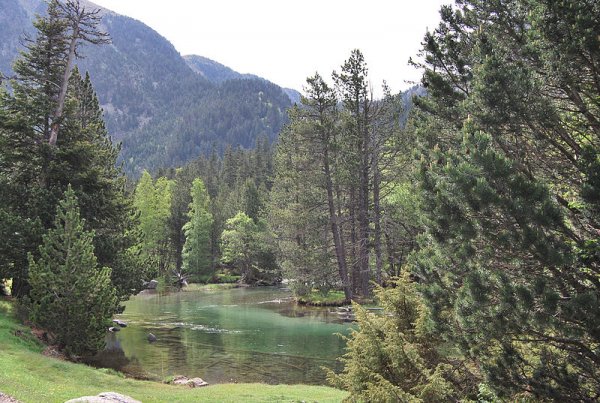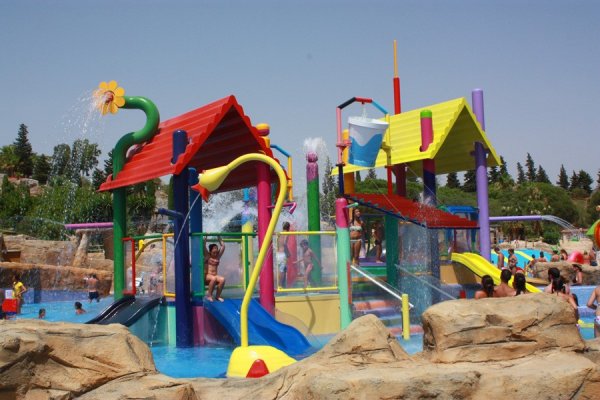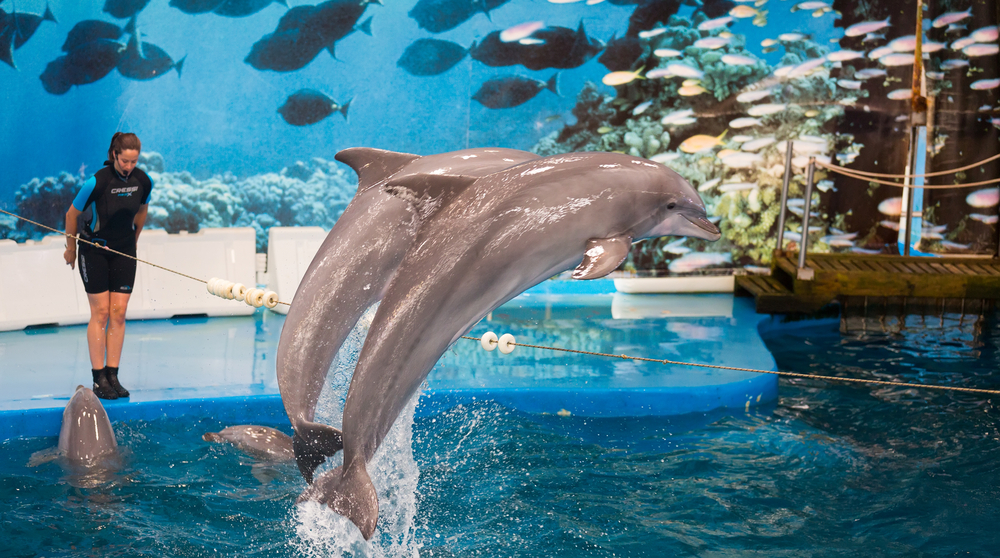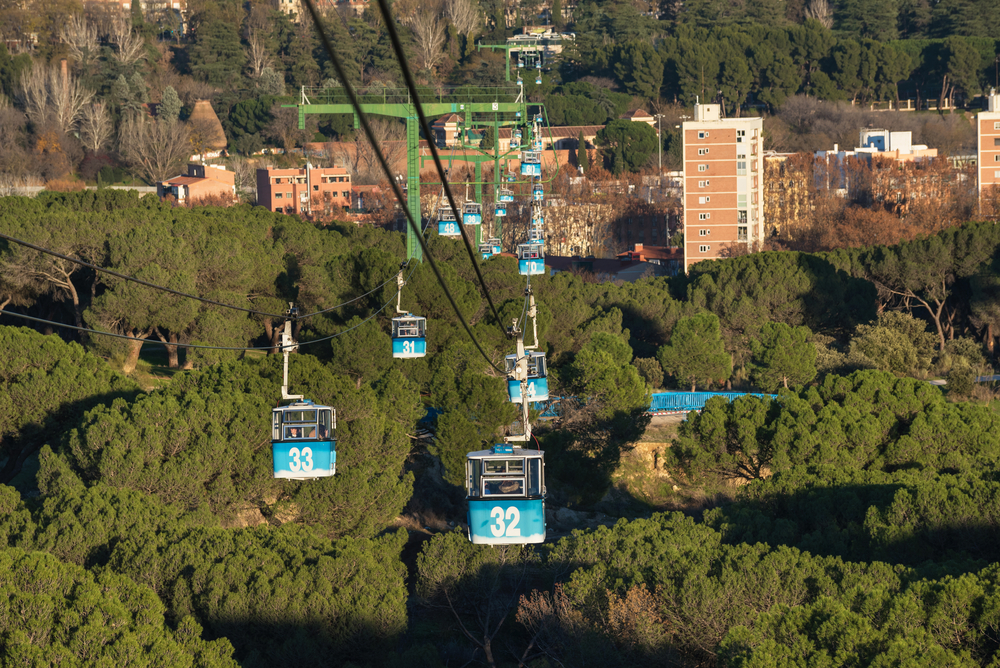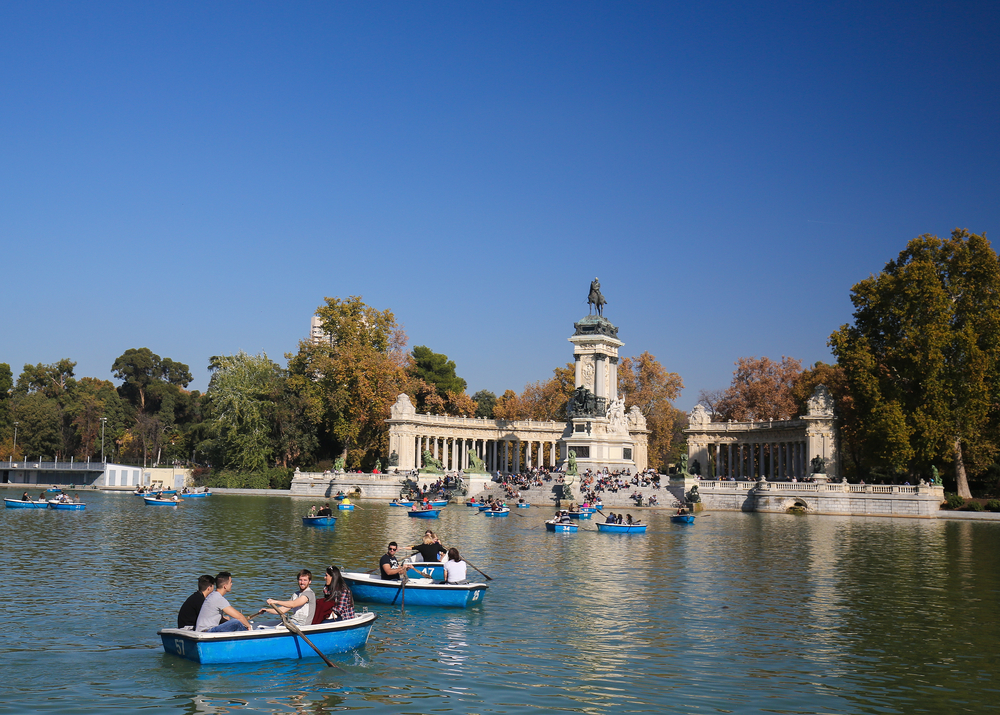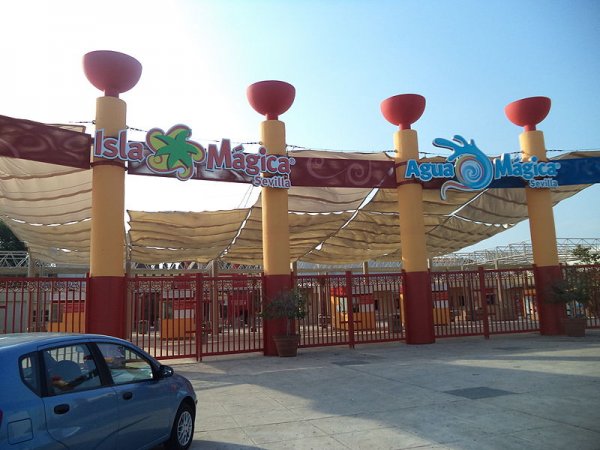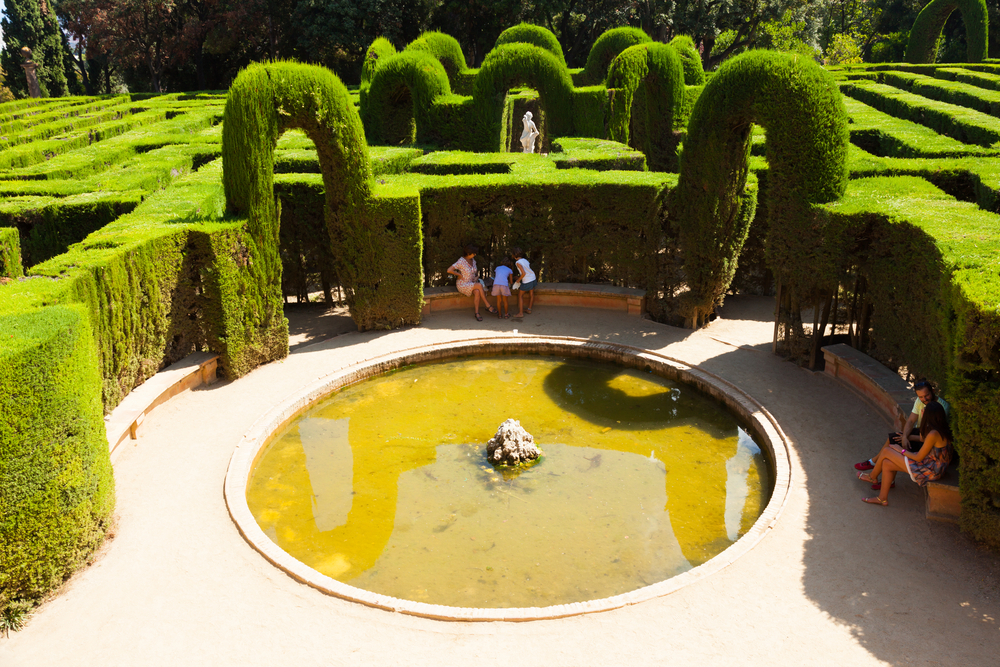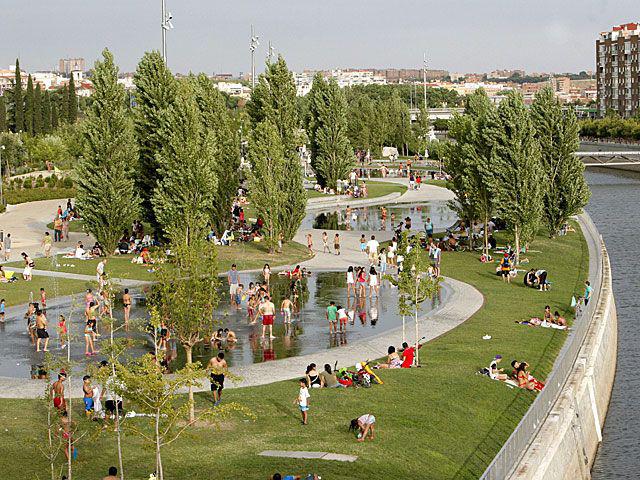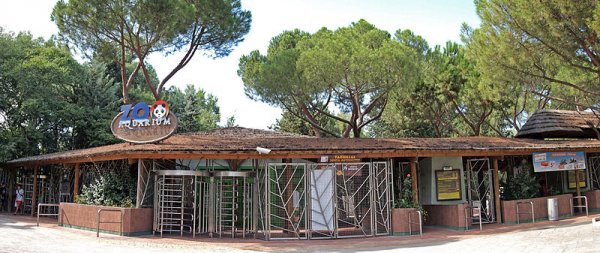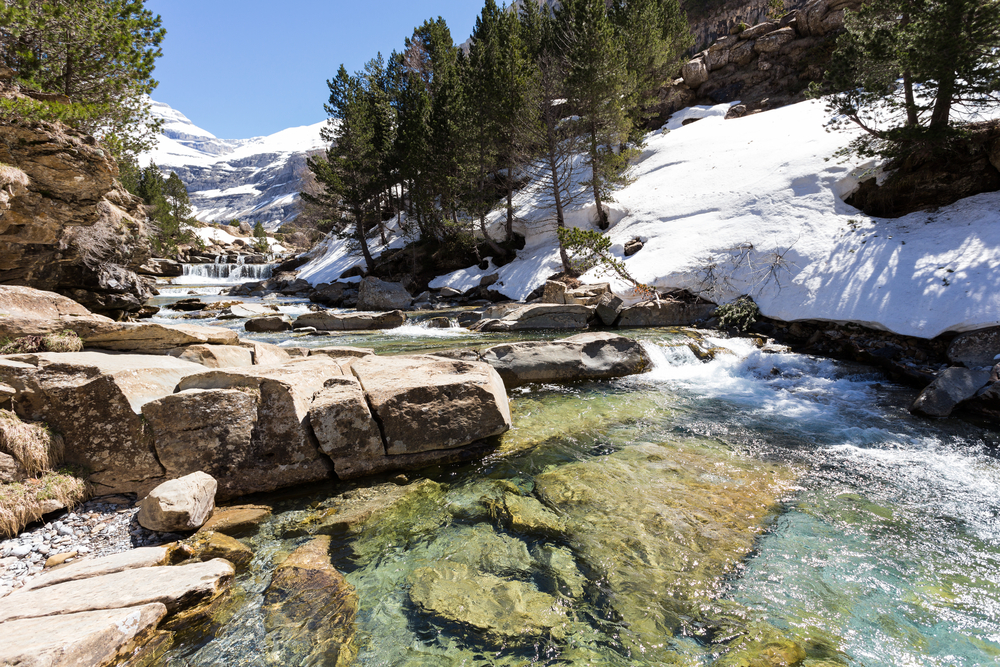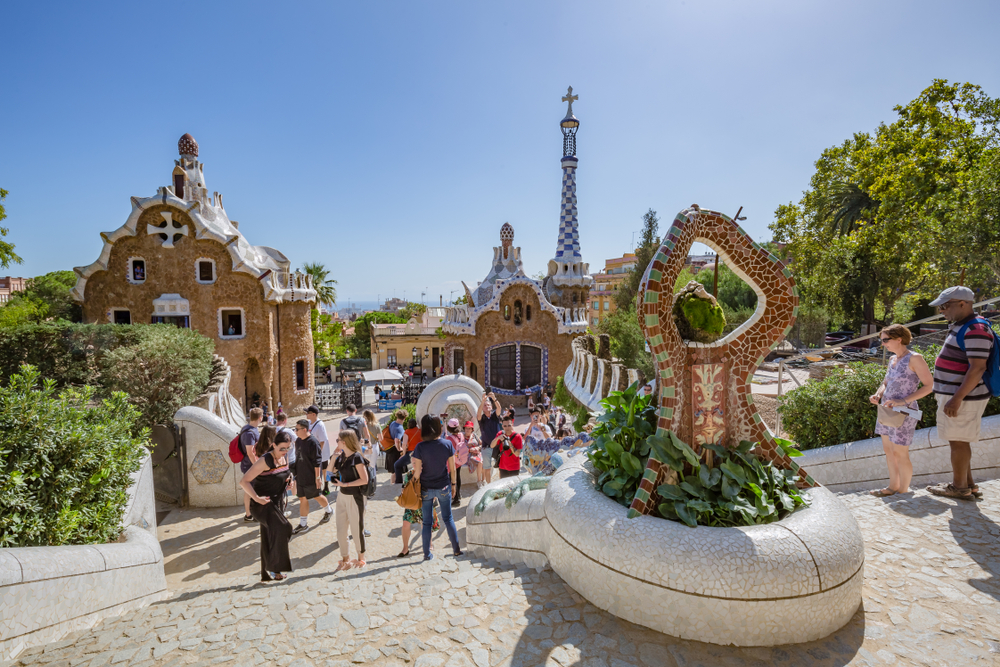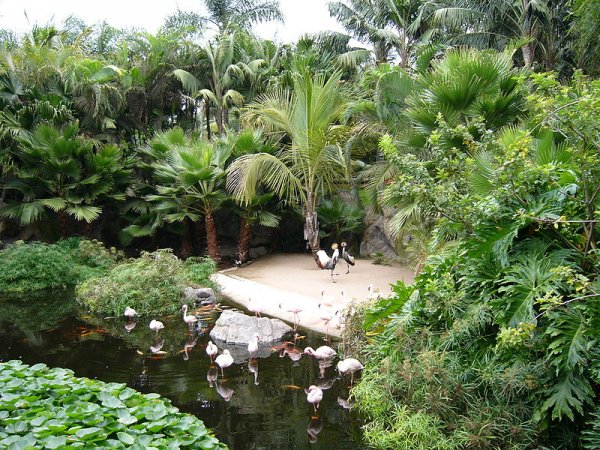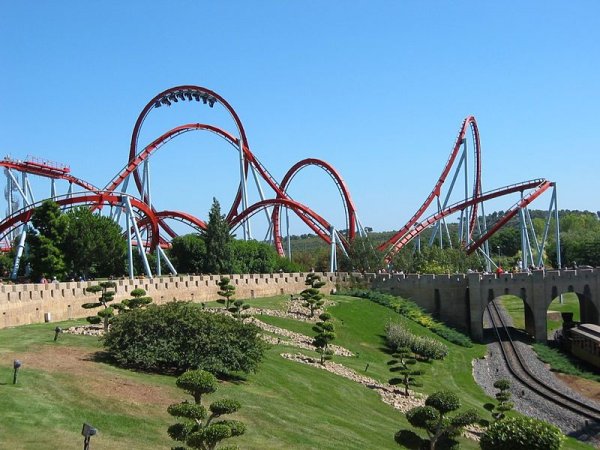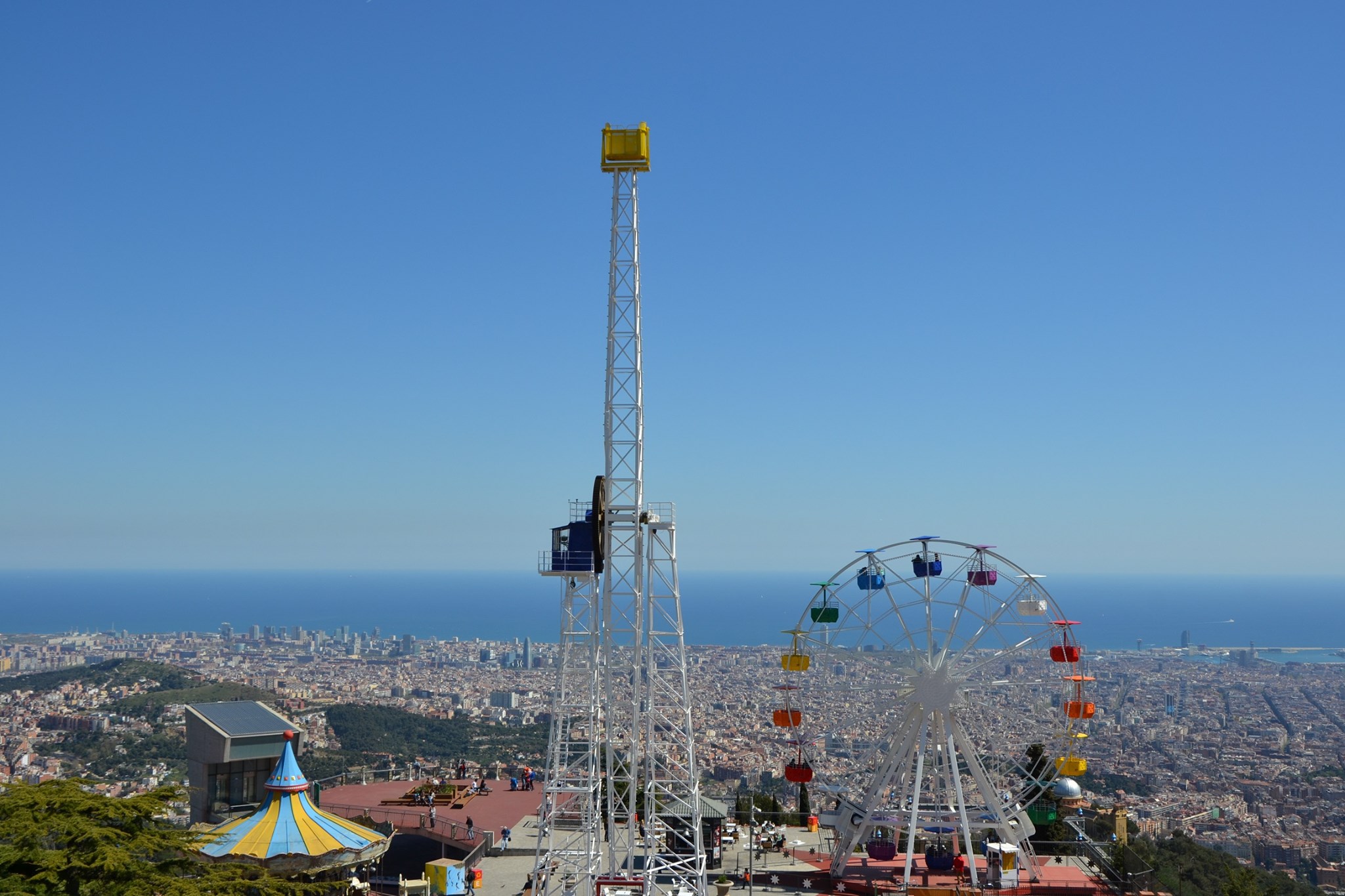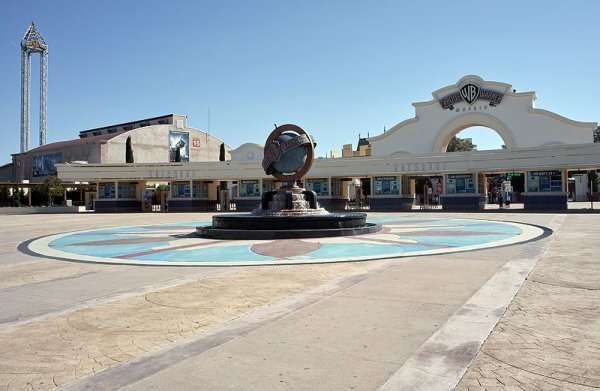Points of Interest
Aigüestortes i Estany de Sant Maurici National Park
Lleida, Catalonia, Spain
This park, created in 1955, occupies the heart of the Pyrenees and includes tall mountains, lakes (nearly 200 of them), and streams. The park covers an expanse of 40,852 hectares (100,947 acres) and has four vegetation zones that vary depending on the elevation, which ranges from 1,600 to 3,000 meters (5,250 to 9,843 feet). They include lower montane, upper montane, sub-alpine, and alpine vegetations. Wildlife species endemic to this region include Pyrenean chamois, marmots, ermines, roe deer, black woodpeckers, common crossbills, Lammergeiers (bearded vultures), and golden eagles.
Aqualand El Arenal
Autovía Palma-Arenal El Arenal
Mallorca 07600, Spain
This huge water park features a host of rides that are variants of water slides, like the Grand Canyon, Devil's Tail, Kamikaze, and Black Hole. The children's favorites include the Mini Park, Dragoland, and Polynesia. In Polynesia, children dive into a world of colors, go down water slides, and swim around a huge aboriginal mask that throws out water-jets. In Banzai, the latest addition, bathers slide down water-slides in a plastic dinghy and drop into a swimming pool at a speed of 50 kmph (31 mph). Other attractions include a surf beach and gardens.
Barcelona Zoo
Parc de la Ciutadella
Barcelona, Spain
Barcelona Zoo is in Parc de la Ciutadella in the heart of the city, a stone's throw from the Born district. Considered one of the most beautiful venues of its kind in Spain, it has the advantage of allowing visitors to almost touch the animals thanks to its open fences. Created in 1892, the zoo is home to around 2,000 animals representing 300 species as well as 1,300 trees, plants, and flowers of 332 different varieties. Among the animals are Sumatran tigers, meerkats, lions, elephants, red pandas, kangaroos, rhinoceros, sea lions, an assortment of birds, and many more. Land of Dragons houses Komodo dragons and a dome houses flying birds. Other attractions include a primates gallery, marmosets gallery, 13 aviaries, and Children’s Zoo featuring farm animals.
—Information provided by Barcelona.com
Casa de Campo Park
Puerta del Angel
28011 Madrid, Spain
Madrid’s largest park, Casa de Campo encompasses 1,722 hectares (4,257 acres) west of the city center. Once a royal hunting estate, the park’s name means “country house.” It offers a variety of recreation including an amusement park, zoo, aquarium, outdoor swimming pools, and lake with rental boats available. A cable car stretching over the Manzanares River connects Casa de Campo with Parque del Oeste (West Park).
Ciutadella Park
Parc de la Ciutadella 21 Passeig de Picasso
Barcelona 08003, Spain
On the site of a much feared 18th-century fortress built by Philip V, Barcelona constructed one of its favorite parks (the former arsenal is now the city's Parliament building). Although perfect for picnics or recuperating from a hard day's footslogging, the park is filled with distinctive features. Look for the Arc de Triomf, built by Josep Vilaseca i Casanovas for the 1888 Universal Exhibition in the city. Rent a boat on the lake and keep an eye out for the statue of a woolly mammoth on the edge. Try to figure out Antoni Tàpies' bizarre sculpture Homage to Picasso. Learn about volcanic mineralogy at the Geology Museum. Visit the zoo, formerly the home of an albino gorilla named Snowflake. Or see one of Antoni Gaudí's first Barcelona creations, the Cascade Fountain, on which he worked as an apprentice.
Doñana National Park
Parque Nacional de Doñana Almonte, Spain
Popularly known as Coto de Doñana, Doñana National Park covers an expanse of 54,300 hectares (134,178 acres) and supports diverse ecosystems. A part of the area is a protected reserve for migratory birds and endangered species like Spanish imperial eagles and Iberian lynxes. The park offers visitors a variety of facilities including campsites, bird watching stations, and recreation grounds, and long stretches of beaches are open to the public. The park also provides guided tours on boats that sail from Sanlúcar de Barrameda and up the river.
El Retiro Park
Parque de El Retiro 7 Plaza de la Independencia
Madrid 28001, Spain
Constructed on the ruins of a former royal palace and opened in 1868, this park is a popular attraction in Madrid. There is a large artificial lake, Estanque del Retiro, with an equestrian statue of King Alfonso XII overlooking it. Two of the park's buildings survived the Napoleonic wars and have been turned into museums. The Museo del Ejército traces Spain's military history and houses an armory, while Casón del Buen Retiro hosts a collection of 19th and 20th-century paintings. Other attractions include the Palacio de Cristal (a glass pavilion), El Angel Caído (the only statue in the world that honors Satan), and a memorial for the victims of the 2004 Madrid terrorist bombing.
El Retiro Park
Parque del Buen Retiro Independence Square
28001 Madrid, Spain
The centerpiece of Madrid’s Retiro neighborhood, the park sharing its name opened to the public in 1868. It offers a variety of outdoor recreation for families such as hiking, biking, and boating. Visitors can explore trails, boardwalks, sculptures, fountains, gardens, and playgrounds as well as the Crystal Palace, built in 1887 and now part of Reina Sofia Museum. There also is a large pond where paddle boats are available to rent. The park’s various gardens include a Rose Garden with more than 4,000 rose bushes.
Greenhouse Atocha
24B Calle de Méndez Álvaro
Madrid, Spain
Explore a lush botanical garden inside a former train station at Greenhouse Atocha. The 4,000-square-meter (43,056-square-foot) garden features more than 7,000 tropical and subtropical plants representing around 260 species. Some of the plants on display include African coffee plants, cacao plants, South African bird of paradise flowers, coconut trees, carnivorous species, water lilies, royal palms, rubber trees, and banana trees. There are several endangered plant species as well such as the ginkgo biloba plant and palm bottle trees.
Isla Mágica
Pabellón de Espana Isla de Cartuja
Seville 41092, Spain
This theme park in Seville is designed around a lake and includes seven themed areas that offer some very exciting rides like the Jaguar (a rollercoaster with five inversions), Quetzal, Fury of the Gods (a Mayan world with 10 exhilarating rides) and El Dorado (a 500-meter/1,640-feet descent by rubber boat). Other attractions include the Cinemoción (a cinema with moving seats), Dimension4 (4D Cinema showing films such as Phantom Manor and SOS Earth), El Cubo (a cinema, with laser and other special effects), Iguazú, Treasure Galleon, and El Desafío.
Labyrinth Park
Parc del Laberint Passeig dels Castanyers, 1
Barcelona, Spain
Labyrinth Park is the green jewel of the Horta and Guinardó district, totaling 55 hectares (135 acres). Barcelona's oldest garden and a matchless example of artistic gardening, it features flower beds, tall trees, and a waterfall. Kids and adults can challenge themselves to complete the green labyrinth made of cypress trees. The park also includes a 14th-century house, Torre Soberana, restored and redecorated in the Arabesque style. The grounds are full of hidden corners to be discovered, some of them decorated with sculptures of mythological figures.
—Information provided by Turisme de Barcelona
Labyrinth Park of Horta
Parc del Laberint dˈHorta 1 Passeig dels Castanyers
Barcelona 08035, Spain
One of Barcelona’s oldest gardens, Labyrinth Park of Horta got its start in 1791 as part of the Desvalls family estate. A 610-meter-long (2,000-foot-long) maze made of tall, manicured hedges leads to a statue of the Greek god of love, Eros. A pond and two pavilions, also featuring statues of Greek gods, overlook the labyrinth.
Madrid Río Park
Ermita del Santo
28011 Madrid, Spain
Situated south of the city center along the Manzanares River, Madrid Río Park is a great place to let kids burn some of their boundless energy. With 17 playgrounds to choose from, there are plenty of play areas for all ages that include hammocks, swings, rope bridges, slides, and climbing structures. In addition, bikes are available to rent. On hot days, Madrid Río Beach is the park’s splashpad where visitors can cool off as they wade in the water and get sprayed by various features.
Madrid Zoo and Aquarium
Zoo Aquarium de Madrid Casa de Campo 28011, Spain
Established in 1770 to show Spaniards the diversity of life in the Americas, the Madrid Zoo and Aquarium arranges more than 500 different species by continent. The zoo is renowned for its dolphin habitat—get there a few minutes before shows start for the best seats. Kids will enjoy the petting zoo, as well as tours by boat and train. Other animals include the Asian elephant, white-handed gibbon, greater kudu, Masai giraffe, Atlas lion, mandrill, red panda, Malayan tapir, meerkat, Nile crocodile, and poison dart frog. The aviary is another highlight, with 5,000 square meters (53,819 ft2) for condors, vultures, and eagles to fly across.
Ordesa and Monte Perdido National Park
Parque Nacional de Ordesa y Monte Perdido Pyrenees of Huesca
Aragón, Spain
The National Park was created in 1918 by a royal decree and covers an area of 15,608 hectares (38,568 acres). The park's topography, consisting of mountainous crests and glacial valleys, has the distinction of being the biggest calcareous mass in Europe. Karstic formations with a multitude of caves, canyons, and chasms dominate the landscape. The Tube of Añisclo and the Gorges of Escuaín, which consists of glacial cirques (basin-shaped formations), are among the important features of the park. The valleys support a lush vegetation of beeches, firs, and black pines. Important wildlife species of the Pyrenees that inhabit the park include marmots, boars, sater moles, royal eagles, common vultures, hawks, and royal owls.
Park Güell
Carrer d'Olot, s/n Gràcia District
Barcelona 08024, Spain
This fairytale park, designed by Antoni Gaudí and opened in 1922, is a garden complex that incorporates architectural elements based on religious mysticism, ancient poetry, and motifs of Catalan nationalism. Two buildings with unusual roofs and pinnacles flank the entrance. Gaudi lived in one of them for a brief period, and it currently houses a collection of his furniture and drawings. The pavilions and the staircase are designed with curved roofs and ornamental spires, resembling a scene from Hansel and Gretel. The dragon-like lizard at the center of the park and the serpentine bench leading up to the Gran Placa Circular, which affords spectacular views of Barcelona and the Bay, are some of the high points of the park.
Parrot Park
Loro Parque s/n Av Loro Parque Puerto de la Cruz, Canary Islands
Santa Cruz de Tenerife 38400, Spain
Loro Parque (Parrot Park) was opened in 1972 with 50 parrots. The park now shelters the largest collection of parrots in the world, with a representation of over 300 species. It also houses the world's largest penguinarium (a recreation of the Antarctic). Other animals include dolphins, sea lions, gorillas, chimpanzees, and tigers. The park's major attraction includes four orcas (killer whales) that are a regular feature of the park's aquatic shows. The Fundación Loro Parque is greatly involved in the conservation of parrots and hosts an international parrot convention every four years. The park has a Botanical Garden covering an area of 13.5 hectares (33 acres).
PortAventura World
Avenue Alcalde Pere Molas
Vilaseca 43840, Spain
This theme park, one of the largest in Europe, is divided into five distinctively themed worlds, namely, Far West, China, Mediterranean, Polynesia, and Mexico. The park's major rides include the Dragon Khan Rollercoaster, the Tutuki Splash, Stampida wooden roller coaster, the Hurakan Condor, the Tomahawk, and the Furious Baco. During Christmas and Halloween, the park opens some special walk-around rides and shows, like Psycho's Circus, Bang Bang Halloween, and Monster High. PortAventura also has a water park and a themed area for little kids.
Tablas de Daimiel National Park
Parque Nacional de las Tablas de Daimiel Carr. a las Tablas de Daimiel
Daimiel 13250, Spain
Spain's smallest national park, Tablas de Daimiel National Park is primarily comprised of plains and wetlands. Covering an area of 1,928 hectares (4,764 acres), this unique ecosystem has large pools of water, formed as a result of the overflow of its rivers, which provide perfect breeding grounds for many species of birds. The park is also a haven for migratory birds that flock here to escape harsh winters elsewhere. Some of the species that inhabit the park and provide a visual feast for bird watchers include great crested grebes, common grebes, black-necked grebes, herons, and egrets.
Tibidabo Amusement Park
Plaça del Tibidabo, 3, 4
Barcelona, Spain
Tibidabo Amusement Park offers classic rides and a throw-back atmosphere that will have parents feeling like kids again. Opened in 1905, it is Spain's longest running amusement park and Europe's third oldest. Though the rides may please the littler family members most, a day here offers many features all ages should enjoy. The fun begins with the journey to reach the park, located on Tibidabo Mountain, accessed by first taking the Tramvia Blau Tram halfway up before jumping aboard a funicular. The amusement park overlooks Barcelona, so the views from the park are impressive, and a ride on the Ferris wheel enhances the experience. There are a total of 30 attractions including a modern rollercoaster that speeds along at 80 kilometers (50 miles) per hour. Other attractions include the Free Fall Ride, a carousel, hall of mirrors, ghost castle, swinging and spinning rides such as the Aeroplane, and train that runs through the park. You can access the park as well as its skywalk and observation deck for free before purchasing ride tickets. Find the tram to reach Tibidabo Amusement Park via the L7 train that leaves from Plaça de Catalunya station in the center of Barcelona.
Warner Bros. Park of Madrid
Parque Warner Madrid Kilometer 15.5, M-301
San Martín de la Vega, Madrid 28330, Spain
Opened in 2002, Warner Bros. Park of Madrid is located 26 kilometers (16 miles) southeast of Madrid. Its rollercoaster rides include Batman la Fuga (a steel inverted rollercoaster resembling Batman) and Coaster Express (a wooden roller coaster). Other popular rollercoaster attractions include Stunt Fall, Superman: Ride of Steel (a floorless roller coaster), and Tom and Jerry. Other rides include La Venganza del Enigma and Riddler's Revenge.
Zoo Aquarium Madrid
Zoo Aquarium de Madrid Casa de Campo
Madrid, Spain
Established in 1770 to show Spaniards the diversity of life in the Americas, Madrid Zoo Aquarium arranges more than 500 different species by continent. The zoo is renowned for its dolphin habitat-get there a few minutes before shows start for the best seats. Kids will enjoy the petting zoo, as well as tours by boat and train. Other animals include the Asian elephant, white-handed gibbon, greater kudu, Masai giraffe, Atlas lion, mandrill, red panda, Malayan tapir, meerkat, Nile crocodile, and poison dart frog. The aviary is another highlight, with 5,000 square meters (53,819 square feet) for condors, vultures, and eagles to fly across.
Copyright © 1993—2025 World Trade Press. All rights reserved.

 Spain
Spain 